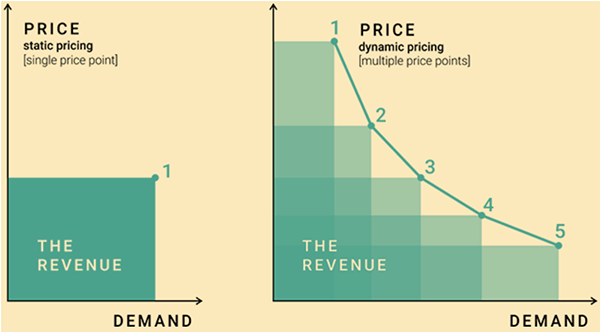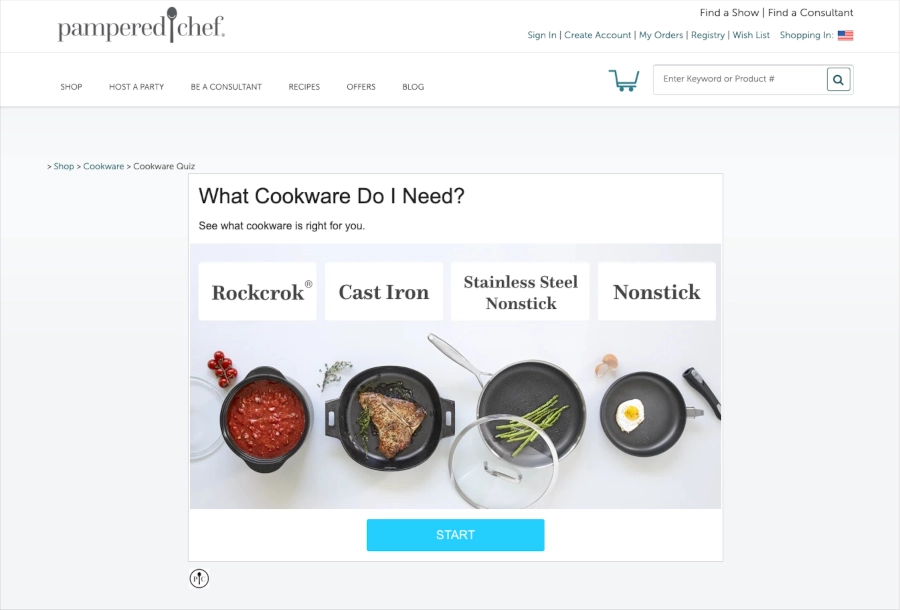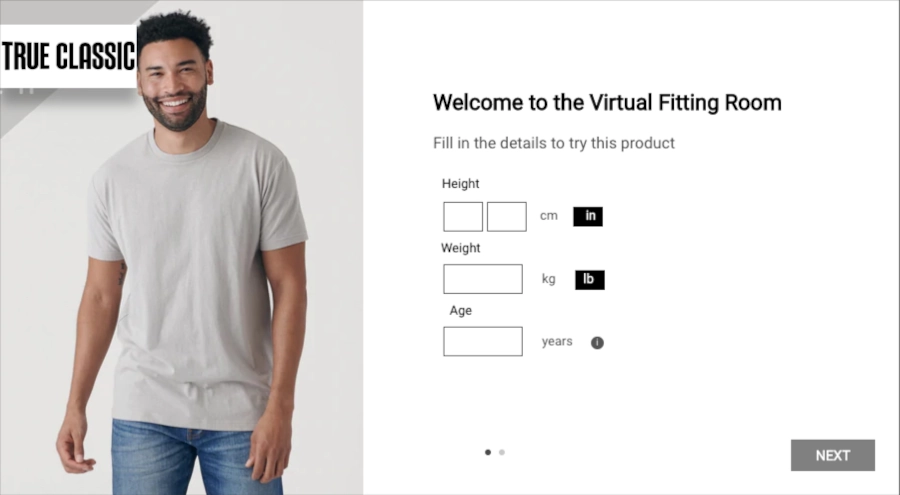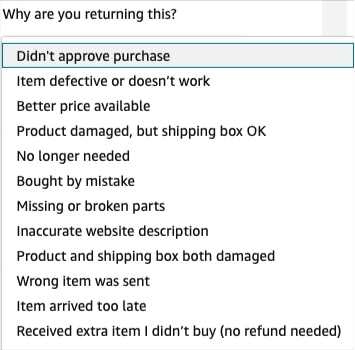Reading Time: 19 Minutes
When it comes to personalization, in-person showrooms appear to have a “one-up” on ecommerce – at first glance. But thanks to the latest in analytics, social media, and mobile shopping technology, concierge retail is manifesting itself online, with or without the aid of brick-and-mortar stores.
Ecommerce personalization is the latest expression of a premium customer shopping experience in 2021. Here’s how it works.
Ecommerce personalization is a set of tools and strategies that deliver a constantly updated and user-centric online shopping experience.
Online shoppers enjoying this rich, digital personalization experience unique product suggestions, intuitive notifications, and even customer support. Thanks to transformative technology in retail, the “white glove” customer experience is now pushing boundaries in a purely virtual capacity.
The current state of ecommerce personalization comes not a day too soon, since COVID-19 lockdowns and widespread social distancing persist. As such, consumers may be stuck at home, but they are also finding delight in the evolving online shopping experience.
The foundation of ecommerce personalization is consumer behavior stored within web page analytics. Marketers can track how users shop and interact with web page features, including product pages, carts, customer chat, heat maps, and more.
Because many brands are growing wiser about how they use consumer emails and phone numbers to engage prospects, online shoppers are willing to provide their contact information in exchange for discounts.
Armed with this consumer information, brands have more options to track consumer responses and gather feedback to improve products, services, and website UX design.
Dynamic pricing is a pricing structure based on seasons, consumer urgency, and product supply/demand.

Using the dynamic pricing model allows brands more flexibility to increase profit margins depending on inventory supply and product popularity. How consumers interact with dynamic pricing gives brands greater insight into how shoppers perceive product/service value in comparison to the average price point.
Personalized ecommerce also focuses on where, when, and how often a brand engages a customer. Marketers can track the ideal number of touchpoints required before most customers buy, and after identifying that ideal number of touchpoints, look for ways to increase the influence of each touchpoint for a faster sales cycle.
The user experience (UX) has a major impact on how relevant customers feel the online store is to their shopping needs. As such, UX designers are in high demand, looking for ways to optimize product pages, streamline online transactions, and reduce the number of customer clicks from landing page to checkout.
When most marketers talk about ecommerce personalization, they are referring to product recommendations. But the focus is shifting from post-purchase product recommendations to pre-purchase recommendations based on analytics and consumer insights.
Customizing the online shopping experience is critical for three main reasons:
In the buyer’s journey, customers are unlikely to see an ad and decide to buy in the moment without any previous brand exposure. For most consumers, there are a variety of touchpoints – ads, product reviews, drip campaigns, etc. – that leads to the point of sale.
The decision to buy undergoes a combination of consumer emotions and decision-making. Personalization can have an enormous impact on how comfortable buyers feel to complete their purchase sooner rather than later. In most cases, eCommerce personalization accelerates the buyer’s journey.
Personalization recognizes that things change. Not only do new generations of shoppers enter the marketplace, but seasoned shopper preferences can also change frequently. As such, online vendors must be agile and build retail systems that are fluid.
The more you know about your customers, the easier it is to serve them. Personalized ecommerce is the key to lowering your costs and increasing your sales.
Personalization is a balance between automation technology and a marketer’s emotional intelligence. Merging digitization with personalization is the future of retail, and brands that prioritize their online footprint will have the advantage in 2021 and beyond.
Despite the rise of ecommerce, in-person retail is not dead. For those brands that maintain an online-only presence, it is not enough to park their catalog on a website and expect customers to feel understood. Personalization requires brands to think in terms of multi and omnichannel capabilities.
Multi-channel, as the name suggests, refers to a retail strategy that operates in more than one digital or physical space. The advantage of multi-channel retail is that the brand is easier to find, be it a website, mobile app, or social media store (such as Instagram In-app Shopping).
The weakness of multi-channel retail is that these channels do not integrate on their own. For example, this approach can result in inventory shortages. To make these various channels work together, brands need an omnichannel approach.
Omnichannel retail integrates all digital and non-digital (physical storefronts) into a holistic shopping experience. Each channel operates in harmony with every other channel. Customers can pick up on one device where they left off on another.
Historically, it has been difficult for small and medium-sized DTC brands to achieve full omni capabilities without a physical store. But thanks to AR technology, social commerce, and cost-effective pop-up shops, omnichannel retail is possible for ecommerce players of all sizes.
A customer quiz uses direct customer feedback to recommend product lines or customized services. Using the customer’s answers, your website can help the shopper refine their search and ensure that they find the right product the first time.
Most quizzes contain between three and ten questions. You can ask the customer about the context within which they would use your product/service and the specific problems that they are trying to solve.
If you feature more than one product line, referring the consumer to the most ideal line for their situation can reduce product returns and increase customer satisfaction.
Particularly when a shopper may not be sure of the best purchase decision, surveys followed by recommendations build customer confidence. The shopper will feel as though you took time to understand their needs before suggesting a purchase.
Pampered Chef is a kitchen utensil and cookware brand known for high quality products. In addition to lifetime warranties, Pampered Chef is serious about personalization.
Online shoppers can take a cookware and bakeware quiz to find the right product line for their lifestyle.

The quiz asks five questions related to how the shopper likes to cook, as well as available dish storage and dishwashing habits.
At the conclusion of the quiz, Pampered Chef recommends a cookware product line. The brand also uses the quiz as an opportunity to collect contact information from the customer for drip campaigns and customer support.
Shopping for the right size in stores is difficult enough. And with pandemic safety concerns and the rise of apparel ecommerce, buying clothes that fit just right proves more challenging.
As such, the best way for apparel retailers to personalize their shopping experience is to take steps to accurately size their shoppers.
Many brands find that the best place to start is by matching sizes to height and weight. Studies show that height and weight dimensions do a better job of helping customers find fitted apparel over traditional sizing charts.
Depending on the brand’s budget, many are employing 3D “virtual bodies,” or customer avatars, to standardize their fits.
“Jason Wang, chief operating officer [at Alvanon] says that since launching last year, more than 160 brands have uploaded their 3D fit standards to the ABP [Alvanon Body Platform, ‘Our 3D virtual bodies allow brands and retailers to monitor fit and sizing within the digital supply chain.’”
– Just-Style, 2020
Upon achieving this consistency at each stage of the supply chain, brands can use height and weight to accurately serve customers.
If you’re a clothing brand, achieving accurate sizing should be your most important personalization goal. Without it, your customers are likely to go elsewhere.
Proving accurate clothing sizes for customers depends on apparel type, cut, material, and (most importantly) a consistent product line that customers can trust to fit “like last time.” Sizing charts are not always helpful, since most customers don’t know how to measure themselves like a professional tailor.
True Classic brands itself as a fitted-cut shirt DTC retailer. To maintain their shape and size, True Classic Tees are made from pre-shrunk cotton and utilize 3D fit technology to match customer sizes.

Shoppers indicate their height, weight, and preferred shirt fit, as shown above. Based on those dimensions, True Classic recommends a size to help customers find the right fit the first time.
Pop-up shops bridge the gap between traditional brick-and-mortar retail and ecommerce. Especially popular among growing DTC brands, pop-up shops are portable, low-cost, and allow online-only stores to seriously consider an omnichannel strategy that includes physical stores.
Pop-up shops range from kiosks to showroom cubicles. These mobile stores typically share space with other retailers and perform best when positioned amongst complementary brands.
If your online store is growing quickly, and you would like to provide a more experiential marketing approach, then pop-up shops are your next step to providing a personalized shopping experience.
The ongoing challenge for ecommerce is that customers do not get to touch and see the products in real life. Traditional storefront retail maintains a high barrier to entry.
Pop-up shops significantly reduce costs associated with traditional retail, and brands can pick up and move these stores as needed. More importantly, pop-up shops let DTC brands complete the circle for a full omnichannel experience.
Warby Parker makes eyeglasses and generates the bulk of its sales online. This brand is frequently showcased as one of the leading users of the pop-up shop model.
One can find Warby Parker locations across the United States inside malls and other collective retail spaces. And while the brand does maintain a few traditional brick-and-mortar stores, the bulk of their offline retail spaces are pop-up shops.
Influencers are social media power users that build online communities sharing like-minded values and lifestyle goals. Brands that partner with influencers enjoy increased online engagement, brand awareness, and sales.
Because influencer audiences tend to be niche or lifestyle specific, product recommendations from influencers are highly nuanced. Furthermore, influencers showcase products the way the brand intended, helping consumers visualize how they can incorporate those products into their lives.
Not all influencers are equally helpful for every brand. The foundation for great influencer marketing is finding the right influencers.
Additionally, brand-influencer partnerships work when they are authentic. That is, the influencer genuinely loves the brand that they promote. These influencers become brand ambassadors, as well as instructional users of that brand’s products and services.
Most DTC ecommerce brands already utilize social commerce and enlist the help of influencers in some capacity. If you choose your influencers well, they can promote nearly any kind of product or service that is relevant to their audience.
Influencers build audiences based on their creativity, originality, and authenticity (social influence). The best influencers refuse to dominate their feeds with product sponsorships. Any promotions complement and adorn the influencer’s posting goals. Influencer followers trust the influencer to produce the best advice and product recommendations.
MVMT Watches sells fashion accessories online. This brand doesn’t just use influencers, it credits influencers for building the business from its startup phase to the brand it is today.
Influencer content promotes MVMT products in real life and shares discount codes within the post (as shown above). For the full story of how MVMT Watches built their influencer program and personalized their ecommerce shopping experience, check out the 0-100 Getting Started With Influencer Marketing series hosted by Katya Allison (Directo, Content at GRIN) and Ethan Frame (formerly Director of Influencer Marketing at MVMT).
Returns and exchanges are a headache – no doubt about it. But some brands have found a way to turn easy returns and exchanges into a selling point. By streamlining the return-exchange process, brands remove the frustration for both themselves and buyers.
Each brand must reduce waste in its product fulfillment and shipping process to accommodate easy returns and exchanges. It’s not enough to say, “Sure, we will exchange that for you!” You need to provide a return policy that is prompt, from quick refunds to pain-free exchanges with a fast turnaround.
Make sure that you have an efficient payment/POS system and ecommerce platform that provides a white glove solution for customers in need of refunds and/or exchanges. When managing returns and exchanges, you should find out why a customer is unsatisfied. Ultimately, you want to reduce returns, but being prompt on refunds and exchanges ensures that your customers keep coming back.
If you ship within the United States or have distribution centers in every country wherein you operate, easy returns and exchanges should be a no-brainer. Shipping overseas or exchanging multiple currencies could prove more challenging for your return policy.
“A painless returns experience drives loyalty, says one study: 95% of respondents said they would shop at a retailer again after having a positive returns experience.”
– Shopify
Many online shoppers are hesitant to buy online from a brand they’ve not used before. Marketing yourself as a place for easy returns and exchanges eliminates those hesitations. You can more quickly acquire new customers and retain current ones.
Amazon Prime is not just the leading ecommerce store, it is also the “holy grail” of easy returns and exchanges. Most online stores lack the fulfillment infrastructure of Amazon, but their example can help brands set personalization goals.

Amazon Prime bends over backward for customers that are unhappy with their purchases. This policy helps Amazon retain over 90% of its Prime subscribers.
Static, one-size-fits-all online stores lack the allure of ecommerce personalization. Taking advantage of one or more of the strategies above can help your brand significantly reduce cost per acquisition, as well as extend the lifetime value of each shopper.
Are you ready to stake your claim in the creator economy? Discover more helpful tips and resources from the experts at GRIN: Creator Management Learning Center
Our team keeps a finger on the pulse, so you’re always working with the latest information.